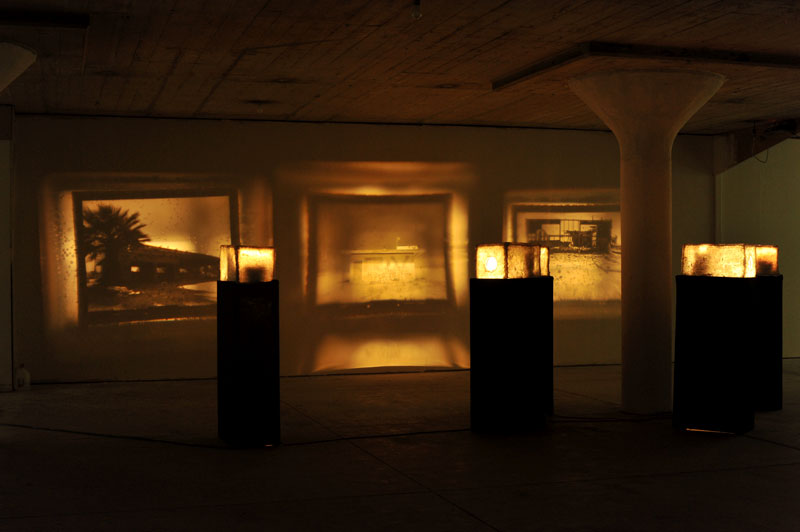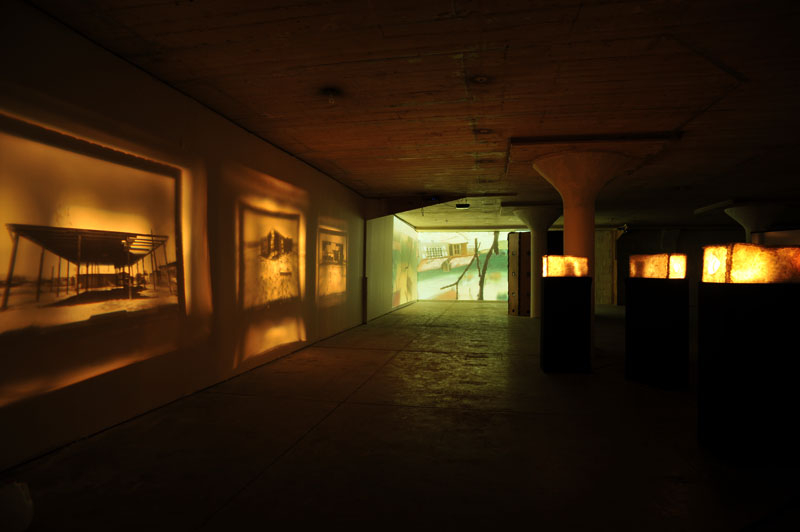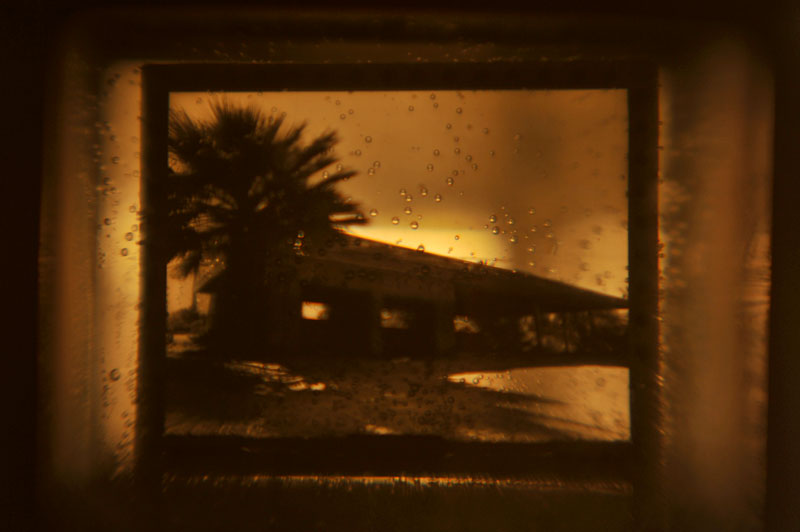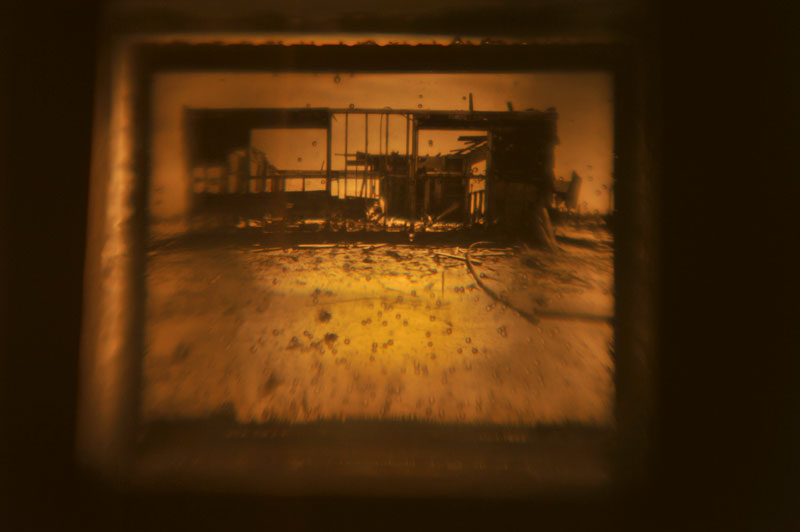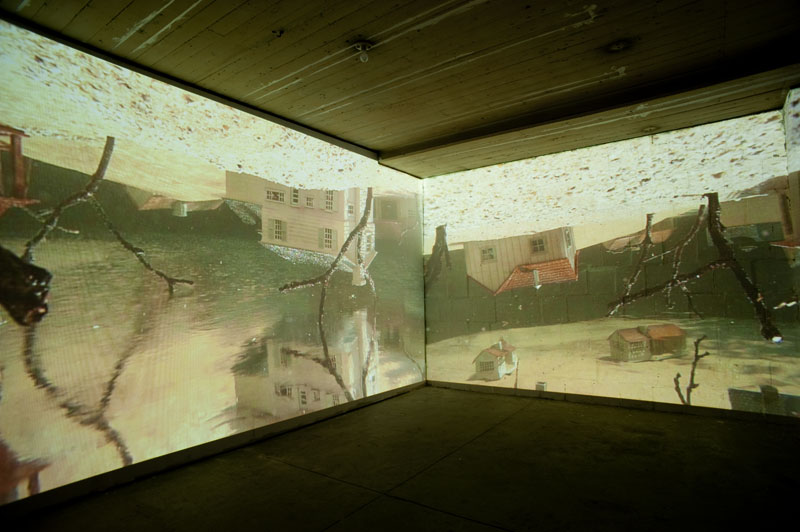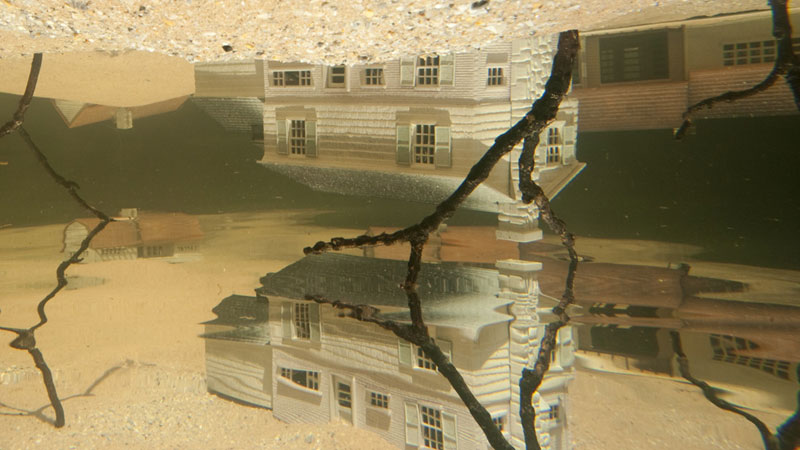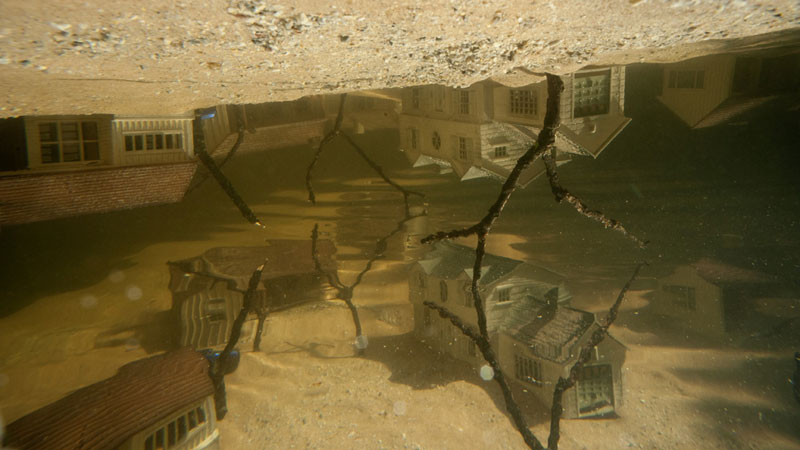
When an image is created photographically, there is a confluence of the subject, place, event, and the photographic device and image maker. Lines intersect at a single point that is the image, then continue on each on their own trajectory.
My installation for the Beyond/In WNY Biennial involved a series of hand-built slide projects, two video projections, and a wall of camera
The images on the film inside the projectors were shot at the abandoned resort town on the banks of the Salton Sea in southern California. The Salton Sea was the result of the disastrous breach of the Colorado River at the turn of the last century, when the river flooded and breached the Imperial Valley Dike and filled the low-lying basin where the sea is now. Only a few hours from Los Angeles this accidental sea was later seen as the perfect place to build a resort community to rival Las Vegas. Unfortunately, as the salinity continued to rise and sewage and agricultural run-off flowed in the sea began to die. For the past few decades it has been a foul smelling place of dead fish and bacteria, and the resort has long been abandoned to decay.As the Salton Sea itself is the product of of a series of disasters, the projections are small disasters happening in the presence of the viewer. A hundred different images of the Salton Sea will be projected and destroyed as the sheets of film are boiled and replaced during the course of the exhibition.
Beyond the crucible-like projectors were a pair of floor-to-ceiling video projections and a large circular wall of camera
Standing between the video projections and the camera obscura the viewer watched the imagery from the perspective of themselves being upside down and underwater, as if caught in the flood. All optics cast an image that is upside down, so from the within the camera obscura the image is reversed again. The video imagery is
The floor to ceiling video imagery is meant to be perceived at a larger scale as if the viewer were there. But the video is really a backdrop that places the viewer of it within an environment meant to be seen with in the camera obscura. As with the boiling projectors, the event being witnessed is not the images captured in the past but those being created in the present.
